Timber wolf
I’ve always found “Lion Safaris” in Canada a little odd. Not because I don’t love giraffes, zebras and big cats, (after all, who doesn’t?), but more because of the incongruity of seeing these African animals out of their natural habitat. I keep thinking that people from other countries would probably love to come here and see our own wildlife if they had the chance to go on a Canadian Safari. I know I would!
Parc Omega Entrance (Jurassic Park, anyone?)
So when I heard about Parc Omega, a Canadian wildlife park in Outaouais, Québec, I was thrilled that Henk and I would get the chance to see some of our own native species, many of which we had never seen before. (Because as anyone knows who has ever tromped through Canadian bush, catching a glimpse of these animals in the wild isn’t easy.)
So, how ‘wild’ are Parc Omega’s animals?
Elk
Let’s be clear here, many of the animals in Parc Omega are not entirely wild. But neither are they domesticated. Parc Omega is essentially an outdoor zoo of sorts, but where the animals are free to go about their lives, foraging, hunting, breeding, etc. There are no cages, no artificial habitats that mimic the real thing, and the animals live outside all year long, adapting to the seasons the same way they would in the wild.
The Alpine Ibex is native to Europe, but is of course welcome, like all immigrants!
A coyote hears us approach
Coyote ready for his closeup
The Parc is huge, and yes, certain areas are fenced off, to keep wolves away from deer, for example, or to separate moose and elk who have a tendency to fight come mating season. But the Parc’s lakes, meadows, forests and rocky hills mean the animals are living in natural environments that other local species also call home.
These wild turkeys found their way into the Parc on their own and now live there
Self-driving safari
Parc Omega is a driving safari, meaning visitors drive their own vehicles along the 15km trail, stopping along the way to photograph animals, and even feed some of them from your open windows, where it is allowed. Henk and I were with a group being hosted by Tourism Outaouais, so we were driven on one of Parc Omega’s buses, which provide groups with the benefit of a tour guide to answer questions and provide information about the park and the animals.
Deer and elk come right up to the bus for carrots
Highlights of Parc Omega
Without a doubt, the highlight of the Parc is the chance to get up close and photograph the animals. After all, where else would you get to see this many species all in one place, and all in a couple of hours or so? And since visitors pose no threat, the animals aren’t shy.
Our spring visit meant many of the deer and elk were shedding their winter coats, and just beginning to sprout antlers (which can be very tender, so we were advised not to touch them). Some had already-impressive racks, but even these were expected to grow another 40 centimetres or more before they reached their maximum size!
Red Deer with a nice rack already!
I have to admit, even our group of grownups got pretty excited when we were allowed to feed carrots to some of these beautiful animals, and we were all snapping photos left and right of the bus as we spotted them approaching.
“Bambi” aka Fallow Deer
This wild raccoon was smaller than his urban Toronto cousins who eat a lot more ‘fast food’
Wolves and bears, too!
Predators are part of Parc Omega’s inhabitants, too, including wolves, foxes and coyotes which are beautiful – and deceptively harmless-looking since they are much like dogs in their mannerisms and social interaction – until they’re NOT!
Arctic wolf pack
Nice, er, doggy?
Because our visit was in the spring, we even got to see one of the resident black bears who had come out of hibernation weeks earlier.
This black bear has started fattening up already.
For safety reasons, special enclosures keep these hunters separated from their natural prey. Because of this, the Parc supplements their natural diet with food, which means the animals aren’t afraid to get closer. The Parc has even built a special observation platform and footbridge in the forest where visitors get a great vantage point for safely viewing and photographing the wolves.
An alpha checking out the terrain
The most dangerous animals of all…
Surprisingly, two of the most dangerous animals in the park are not carnivores at all: muskoxen are by far the most unpredictable, and because of this, visitors are not allowed to feed them. Same goes for the bison, which can pose a threat due to their sheer size and one-ton weight. So it’s wise to steer clear of them (especially if you’re driving a Smart Car!).
The notoriously unpredictable muskox, the most dangerous animal
A Great Canadian Safari
Baby Caribou born in Parc Omega
Parc Omega Restaurant entrance
Despite the fact that I knew and recognized some of these animals, (and even despite the rain!), I really enjoyed the chance to see and photograph a few of Canada’s beautiful creatures in a way that felt mutually respectful and beneficial. It truly was a great Canadian Safari, and I can’t think of a better way to get up close and personal to some of our country’s wildlife.
TIP: If you want to spend a night in the park, Parc Omega also offers several unique accommodation options (everything from tipis to log cabins.)
Special thanks to Parc Omega and Tourism Outaouais who hosted Henk and I as we both went snap-happy on safari!
Pin me to your favourite Board!

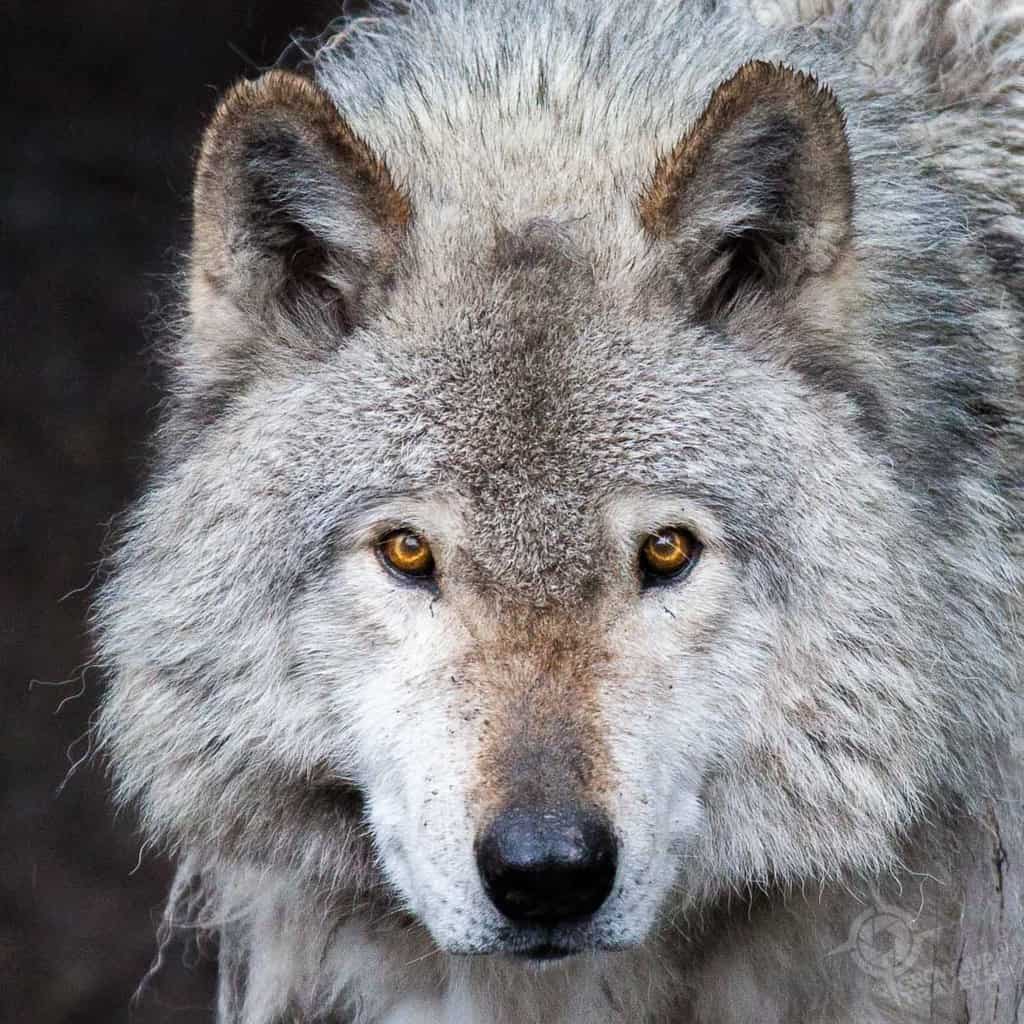
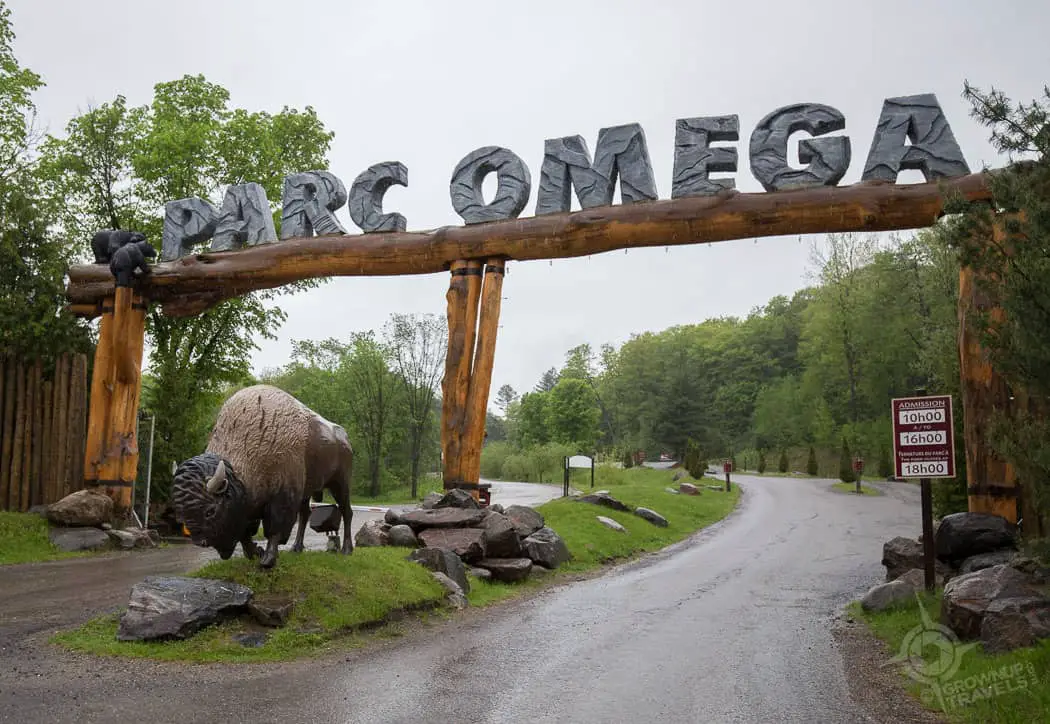
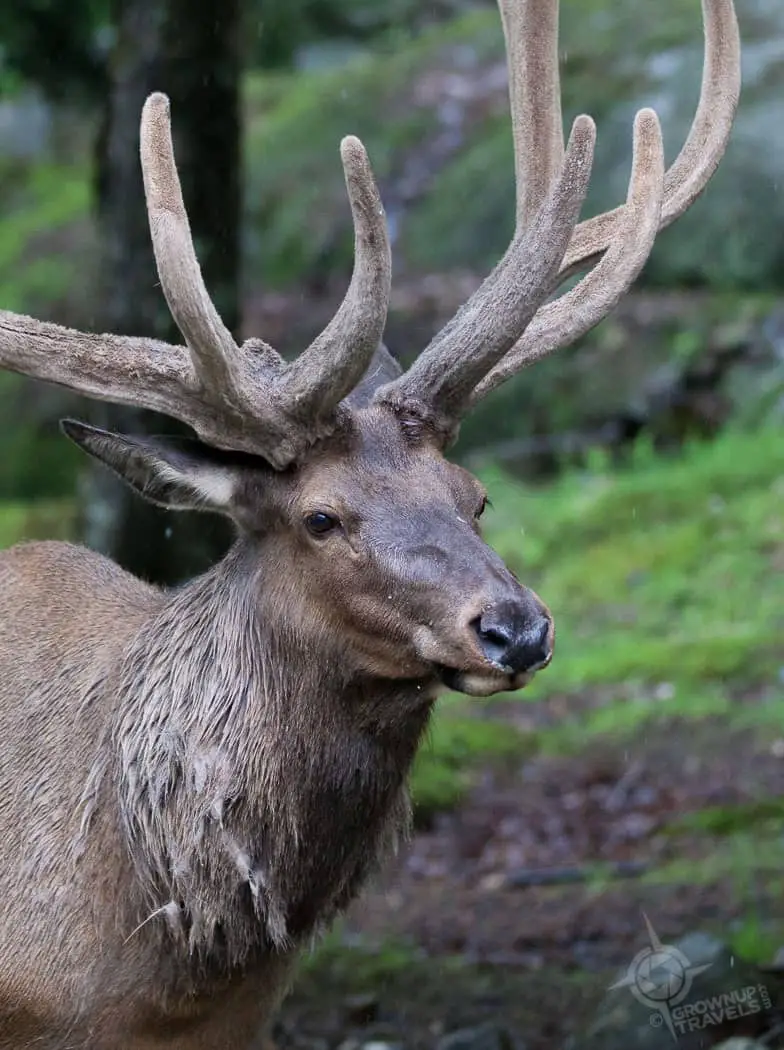
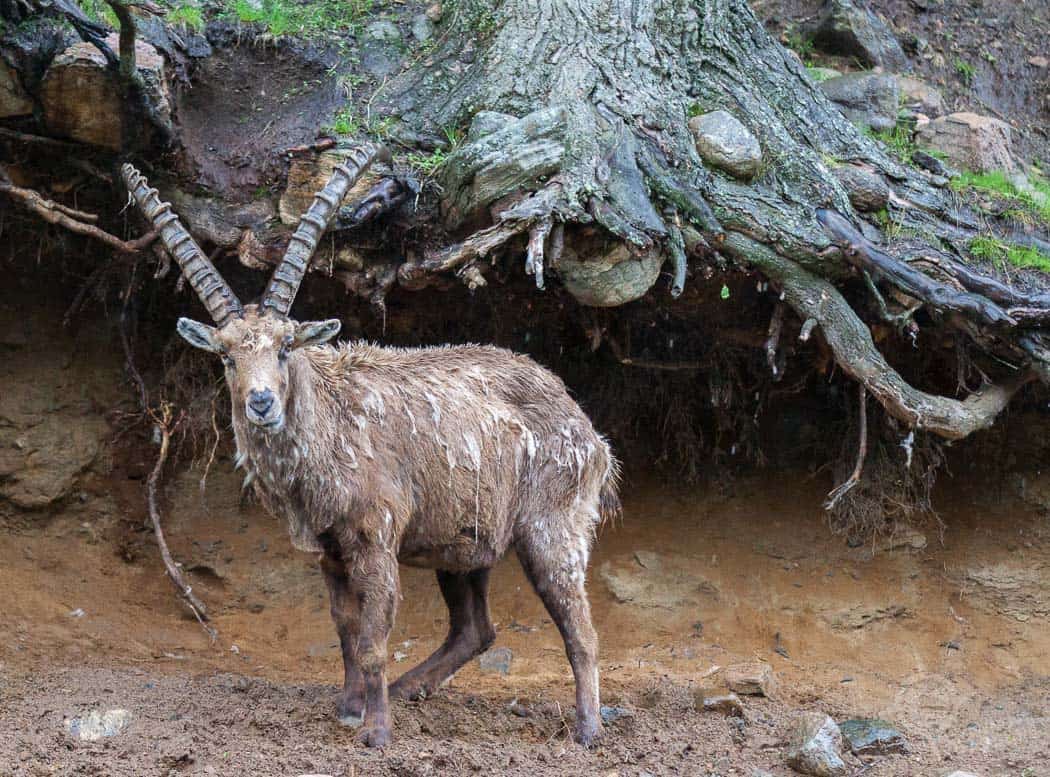
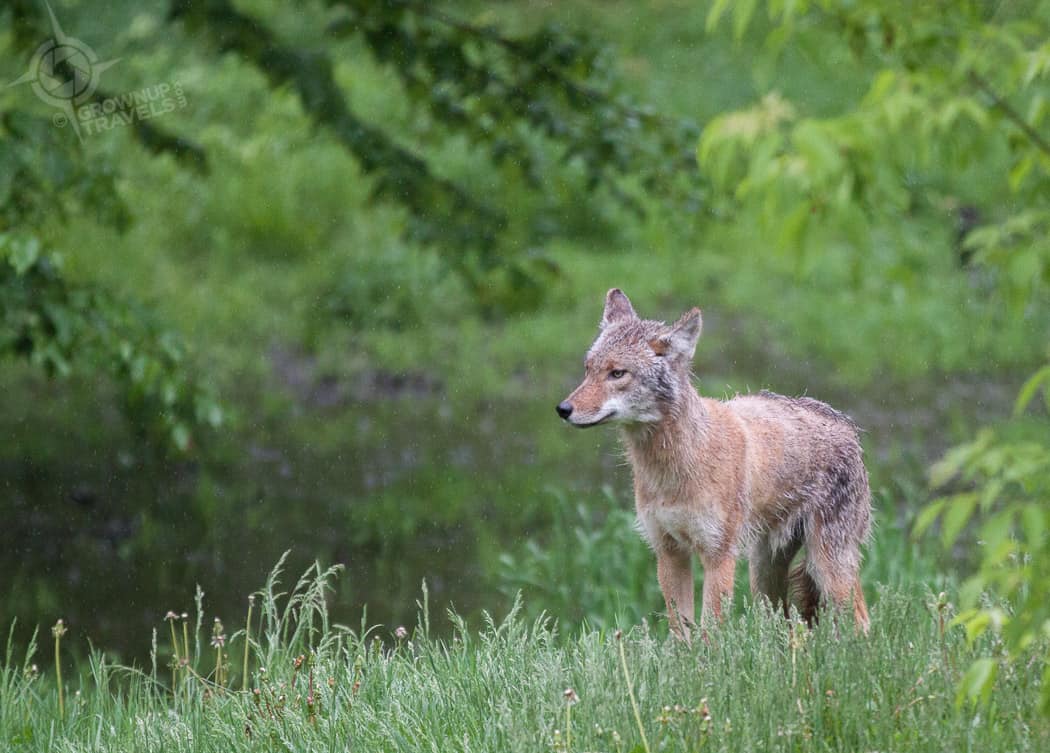
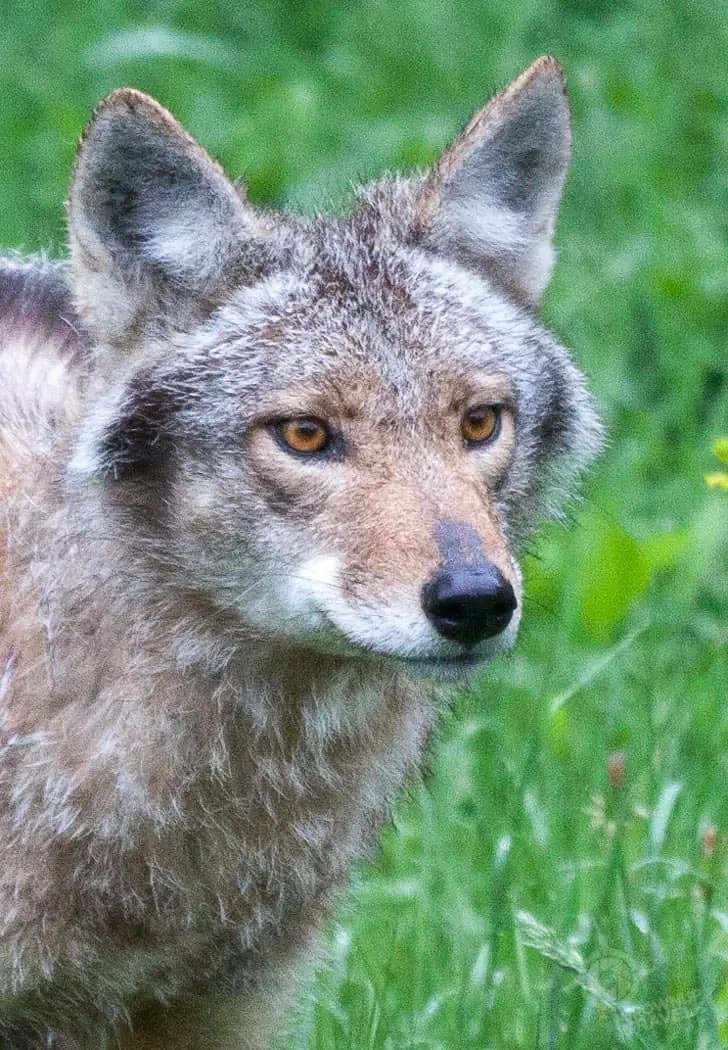
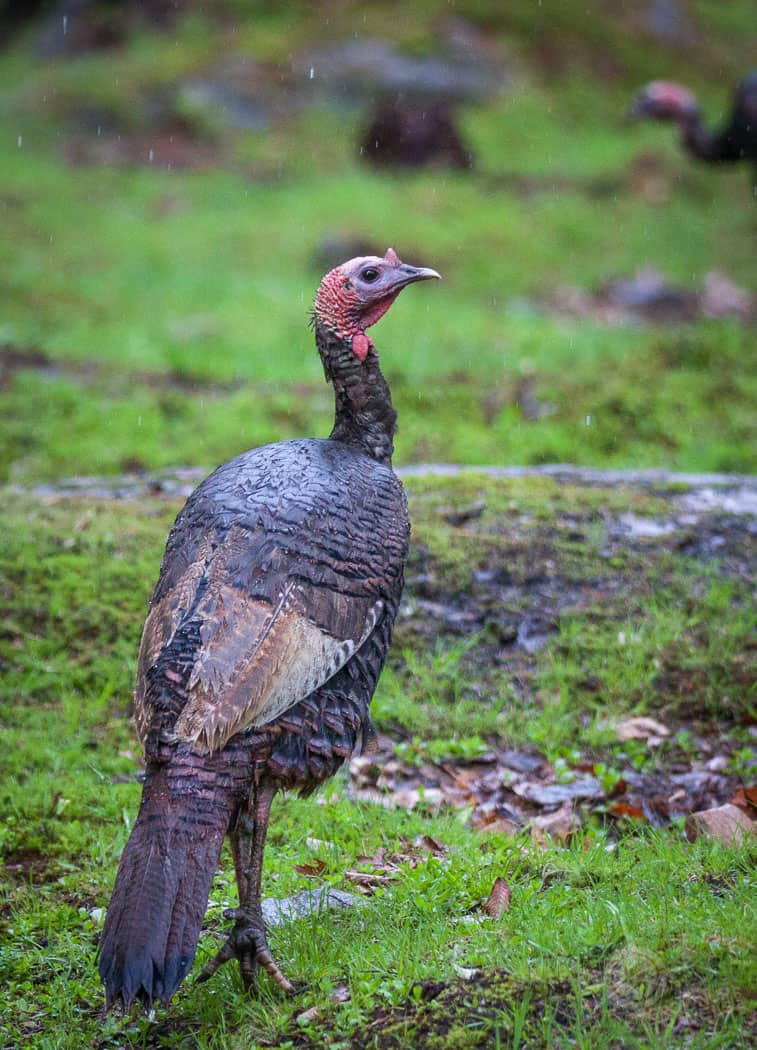
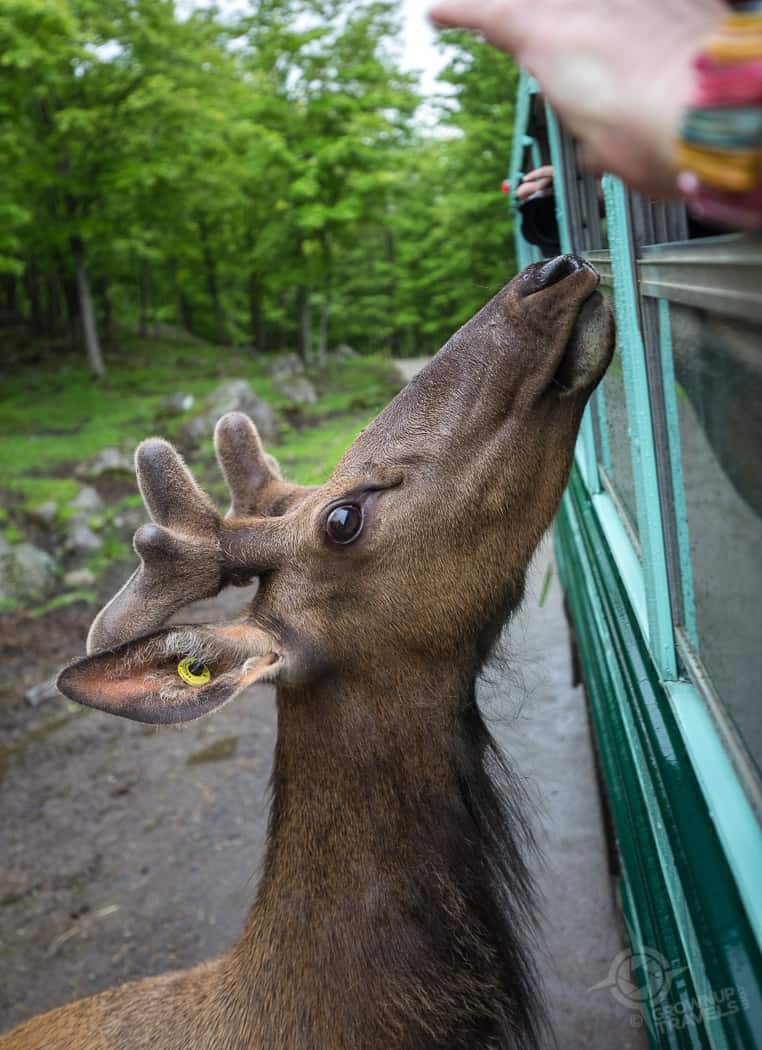
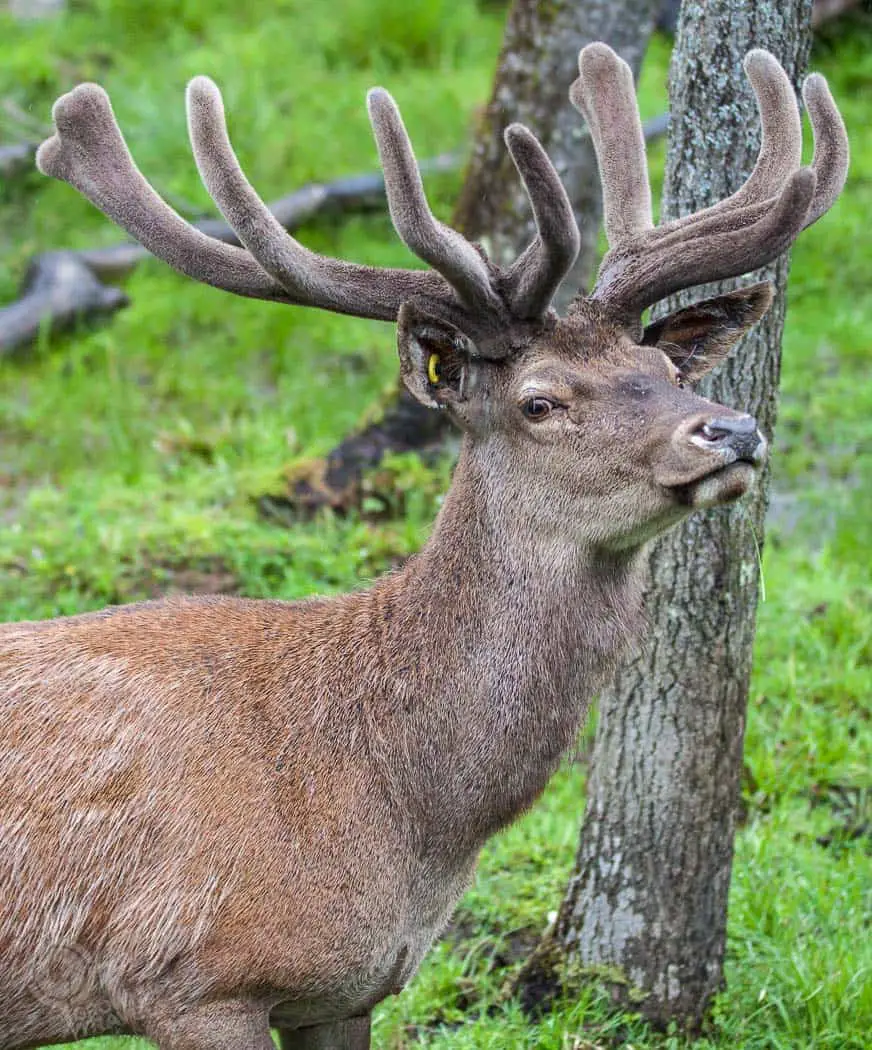
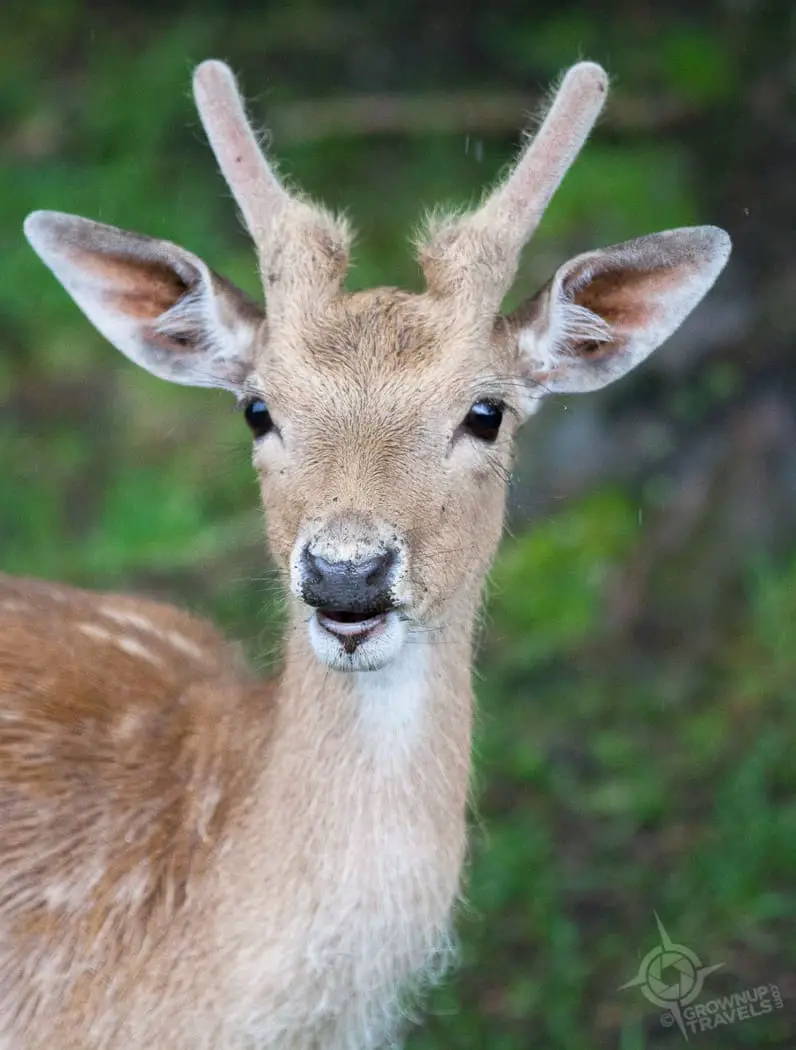
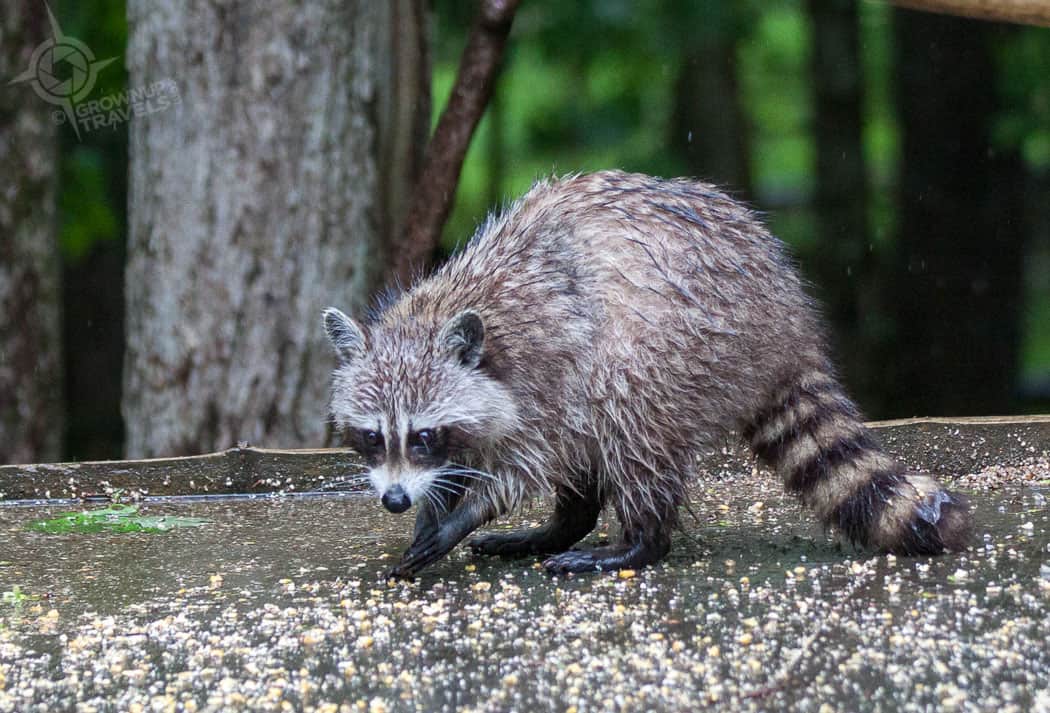

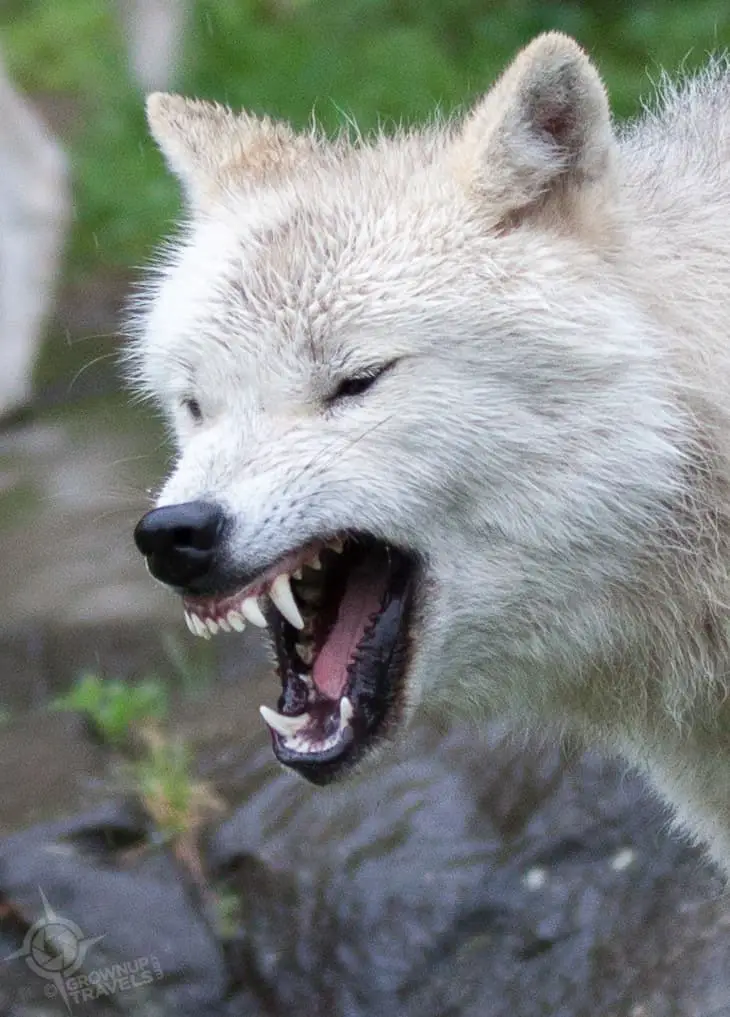
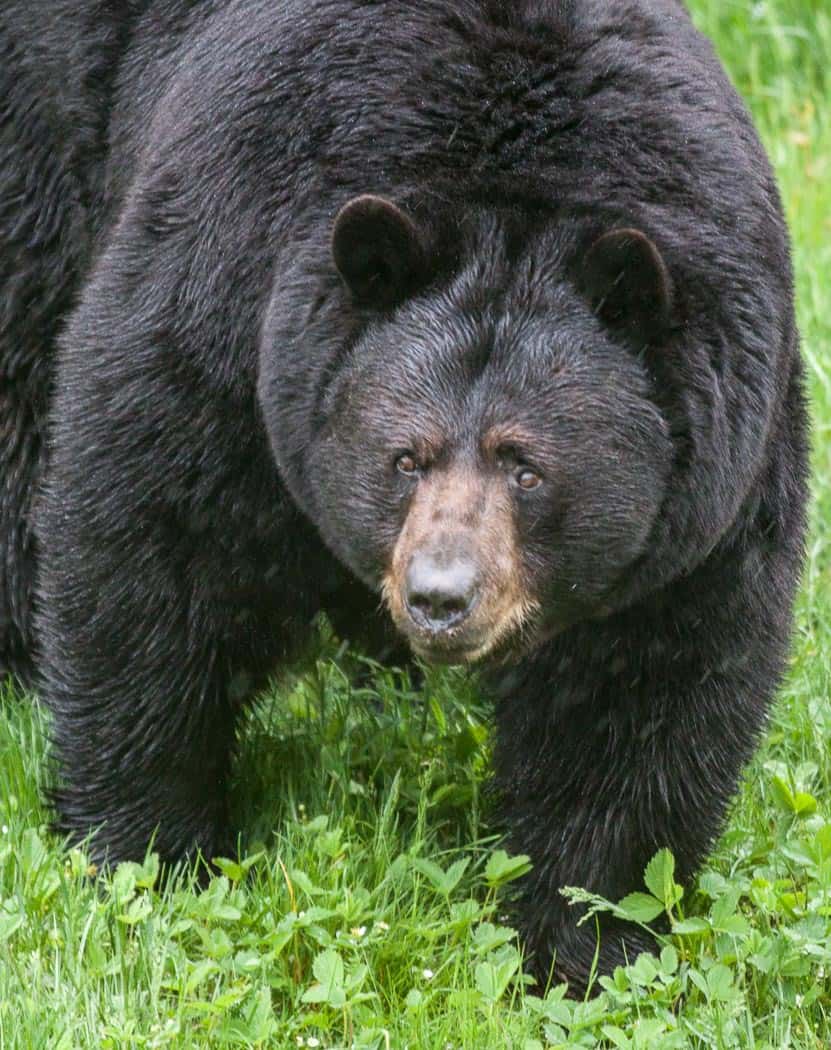
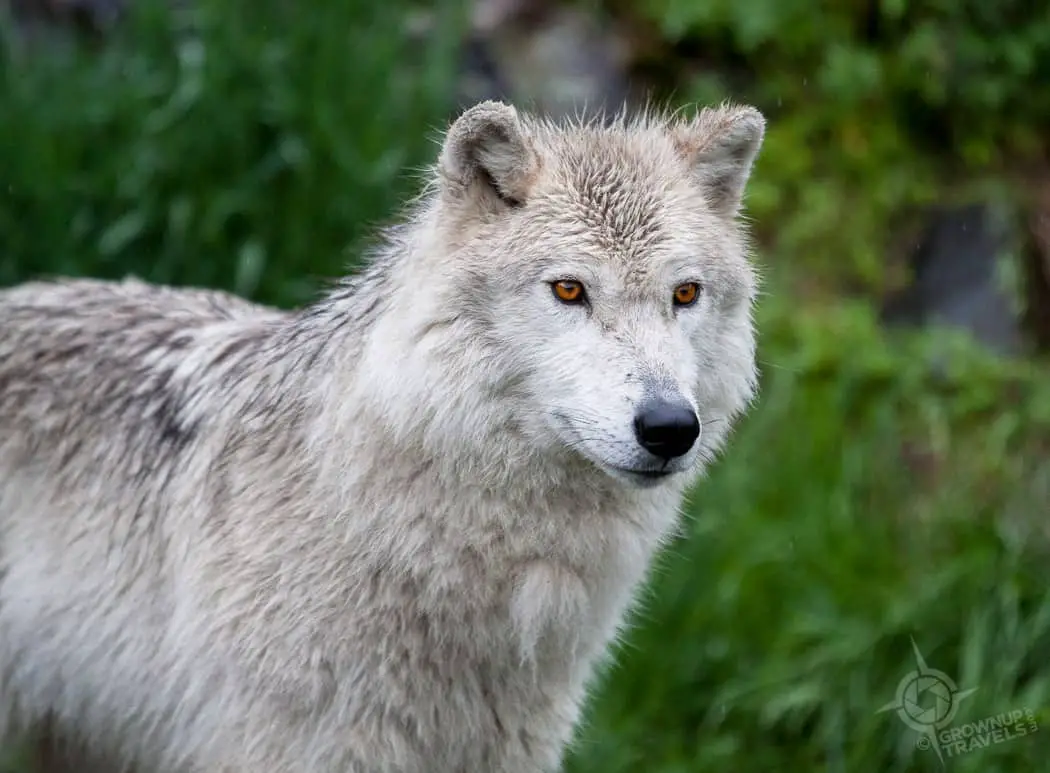

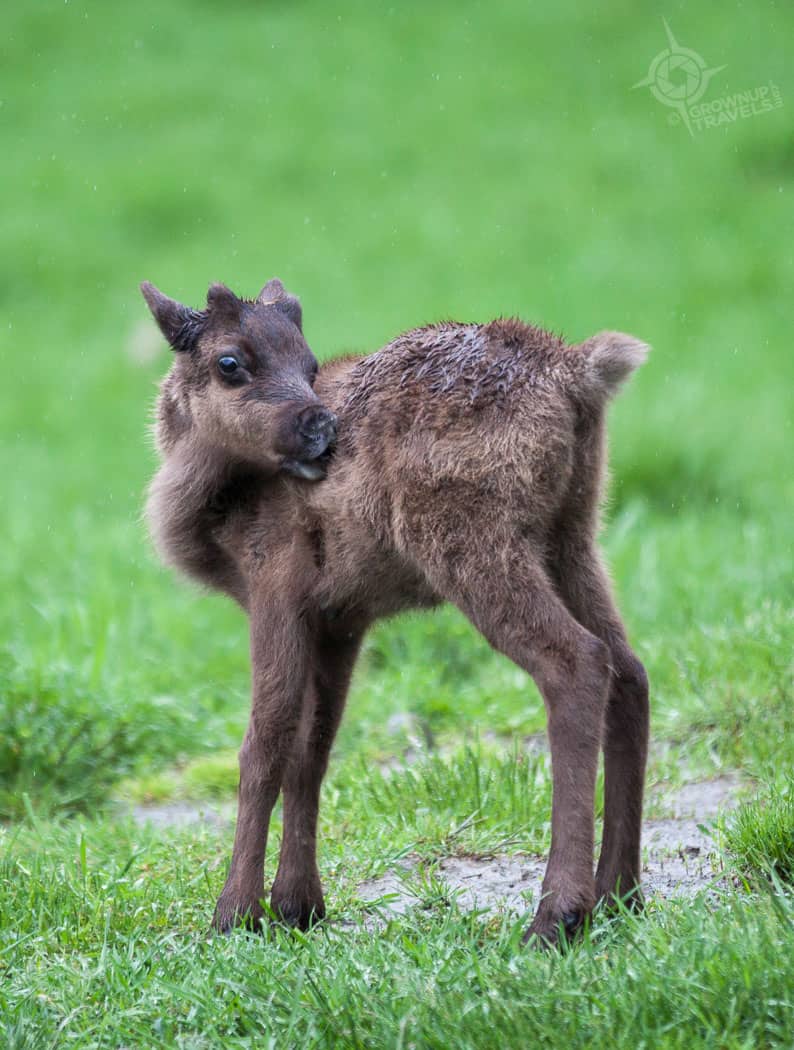
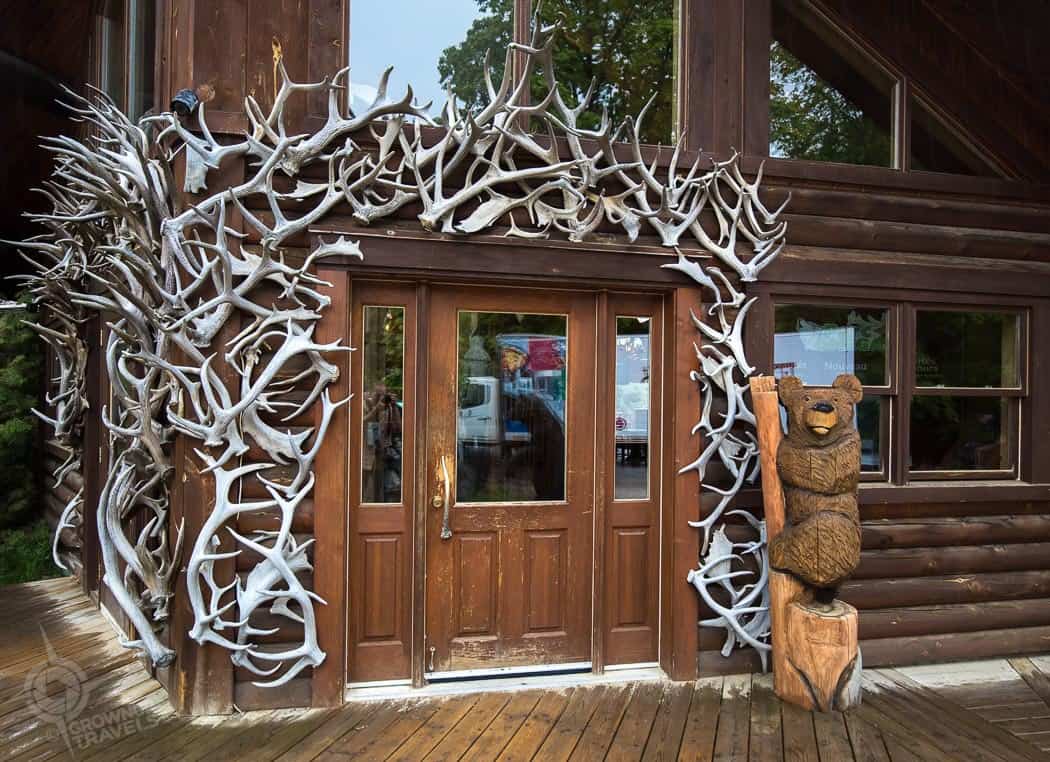
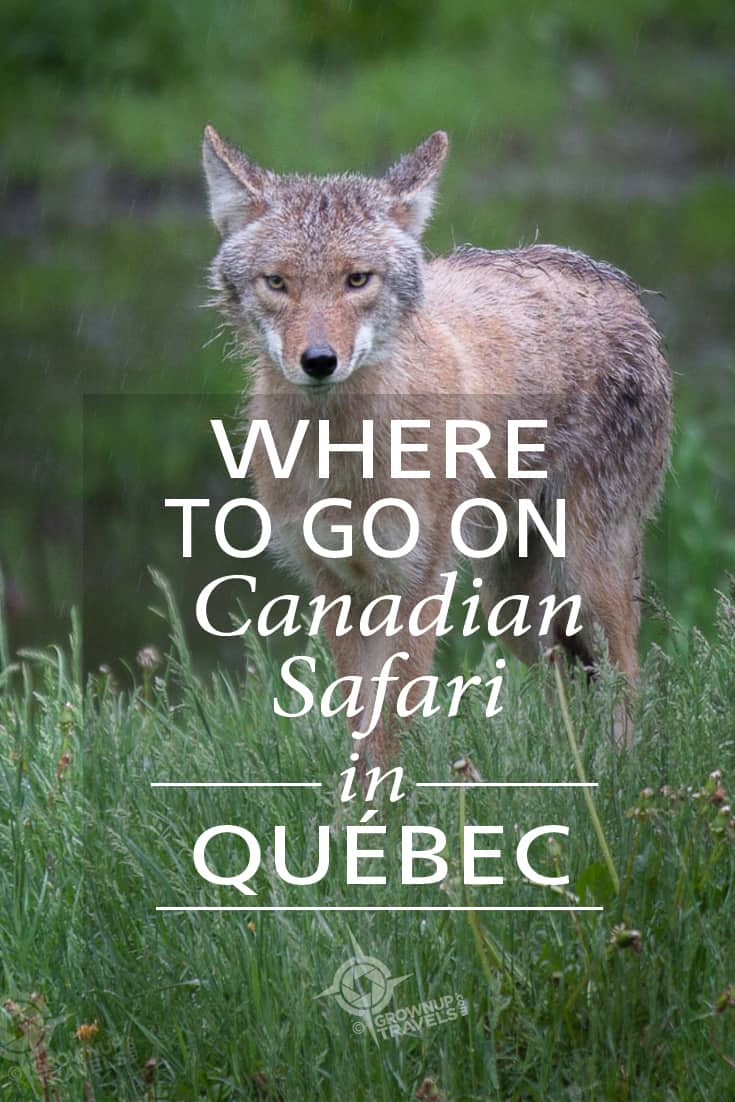

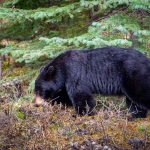
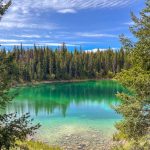








What amazing pictures you got in Parc Omega! It is a sort of a zoo, but if zoos are going to exist at all, this is the best kind. It’s nearly indistinguishable from the wild (both for you and the animals), and it allows close observation of the animals. I’m surprised they separate the predators from the prey. Wouldn’t the animal populations balance out naturally if they were all left to their own devices? Or is the place too small for that?
Thanks for your comment, Rachel. I agree, by the way, that as zoos go, this is the best kind. I think they have to separate the predators, just due to the size of the park itself. There just isn’t enough land for the amount of prey/predator ratio to make it ‘fair’ in the natural scheme of things.
The only safari we’ve ever done was in South Africa at an open wild animal reserve. We were in an open land rover (no roof nor sides). They don’t feed the animals and the first one we came upon was a lion. Fortunately, a sleepy lion who looked like he had just eaten judging by his distended belly.
I would go on one in Canada or the US. One just hopes that no yahoo decides to feed a predator as has happened on occasion with disastrous results.
My only previous experience was with a Tanzanian safari, too. So this was a little different, because Parc Omega does supplement the animals’ diets by feeding them. And since it is a zoo, visitors aren’t allowed to roam around freely themselves, so there’s less likelihood of a problem happening than in Africa, where visitors have been known to get outside their jeep and get killed. Plus the predators are kept away from the driving trail with fences. That being said, any safari offers the opportunity for bad human mistakes!
Great photos…and so many! I think it was probably better to be in the bus. I always remember being a African Lion Safari and thinking, “I don’t want those monkeys jumping on my car!” What a super place. I’ll have to look up where it is in case I do a Quebec road trip!
I agree – I wouldn’t want one of those huge elks coming over to my little car! I preferred the idea of the bus, too!
Haha, ironic that the animals most closely related to cows – a beast most directly produced for human consumption – is the biggest danger to humans in the park!
I’ve been trying to talk my wife into visiting Canada. She doesn’t want to because it’s north – and north means cold… I think this article might change her critter-lovin mind. 😉
You’ll just need to come in the summer, Jeff, when the weather is the best and all the animals are active and I’m sure your wife would love it!